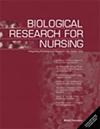接受化疗的儿童癌症患者的代谢途径与精神神经症状相关
IF 1.9
4区 医学
Q2 NURSING
引用次数: 2
摘要
背景:接受化疗的癌症儿童会出现一系列神经心理症状(PNS),包括疼痛、疲劳、焦虑和抑郁症状。代谢组学有望区分与PNS簇相关的代谢途径。目的:确定儿童癌症患者化疗前后与PNS簇相关的代谢途径。方法:使用儿科PROMIS量表评估疼痛、疲劳、焦虑和抑郁症状。计算t分数并以50为截断点进行二分类;PNS集群是4种症状的总和,范围为0(所有t评分结果:参与者人口统计(n = 40)为55%女性,60%白人,62.5%年龄在13-19岁之间,62.5%诊断为霍奇金淋巴瘤和b细胞急性淋巴细胞白血病。在9276个独特的代谢特征中,在一个化疗周期中,454个与疼痛相关,281个与疲劳相关,596个与焦虑相关,551个与抑郁症状相关,300个与PNS集群相关。脂肪酸途径与疼痛相关:新生脂肪酸生物合成(p < 0.001)、脂肪酸代谢(p = 0.001)、脂肪酸活化(p = 0.004)和omega-3脂肪酸代谢(p = 0.009)。色氨酸途径与疲劳(p < 0.001)、焦虑(p = 0.015)和PNS集群(p = 0.037)相关。肉碱穿梭与PNS簇相关(p = 0.015)。结论:脂肪酸和氨基酸途径与接受化疗的儿童PNS有关。这些发现需要在更大的样本中进行进一步的调查。本文章由计算机程序翻译,如有差异,请以英文原文为准。
Metabolic Pathways Associated With Psychoneurological Symptoms in Children With Cancer Receiving Chemotherapy.
Context Children with cancer undergoing chemotherapy experience a cluster of psychoneurological symptoms (PNS), including pain, fatigue, anxiety, and depressive symptoms. Metabolomics is promising to differentiate metabolic pathways associated with the PNS cluster. Objectives Identify metabolic pathways associated with the PNS cluster in children with cancer before and after chemotherapy. Methods Pain, fatigue, anxiety, and depressive symptoms were assessed using the Pediatric PROMIS scales. T-scores were computed and divided dichotomously by a cutoff point of 50; the PNS cluster was a sum of the four symptoms ranging from 0 (all T-scores <50) to 4 (all T-scores ≥50). Serum metabolites were processed using liquid chromatography mass-spectrometry untargeted metabolomics approach. Linear regression models examined metabolites associated with the PNS cluster. Metabolic pathway enrichment analysis was performed. Results Participant demographics (n = 40) were 55% female, 60% white, 62.5% aged 13–19 years, and 62.5% diagnoses of Hodgkin’s lymphoma and B-cell acute lymphocytic leukemia. Among 9276 unique metabolic features, 454 were associated with pain, 281 with fatigue, 596 with anxiety, 551 with depressive symptoms, and 300 with the PNS cluster across one chemotherapy cycle. Fatty acids pathways were associated with pain: de novo fatty acid biosynthesis (p < .001), fatty acid metabolism (p = .001), fatty acid activation (p = .004), and omega-3 fatty acid metabolism (p = .009). Tryptophan amino acid pathway was associated with fatigue (p < .001), anxiety (p = .015), and the PNS cluster (p = .037). Carnitine shuttle was associated with the PNS cluster (p = .015). Conclusion Fatty acids and amino acids pathways were associated with PNS in children undergoing chemotherapy. These findings require further investigation in a larger sample.
求助全文
通过发布文献求助,成功后即可免费获取论文全文。
去求助
来源期刊
CiteScore
5.10
自引率
4.00%
发文量
58
审稿时长
>12 weeks
期刊介绍:
Biological Research For Nursing (BRN) is a peer-reviewed quarterly journal that helps nurse researchers, educators, and practitioners integrate information from many basic disciplines; biology, physiology, chemistry, health policy, business, engineering, education, communication and the social sciences into nursing research, theory and clinical practice. This journal is a member of the Committee on Publication Ethics (COPE)

 求助内容:
求助内容: 应助结果提醒方式:
应助结果提醒方式:


